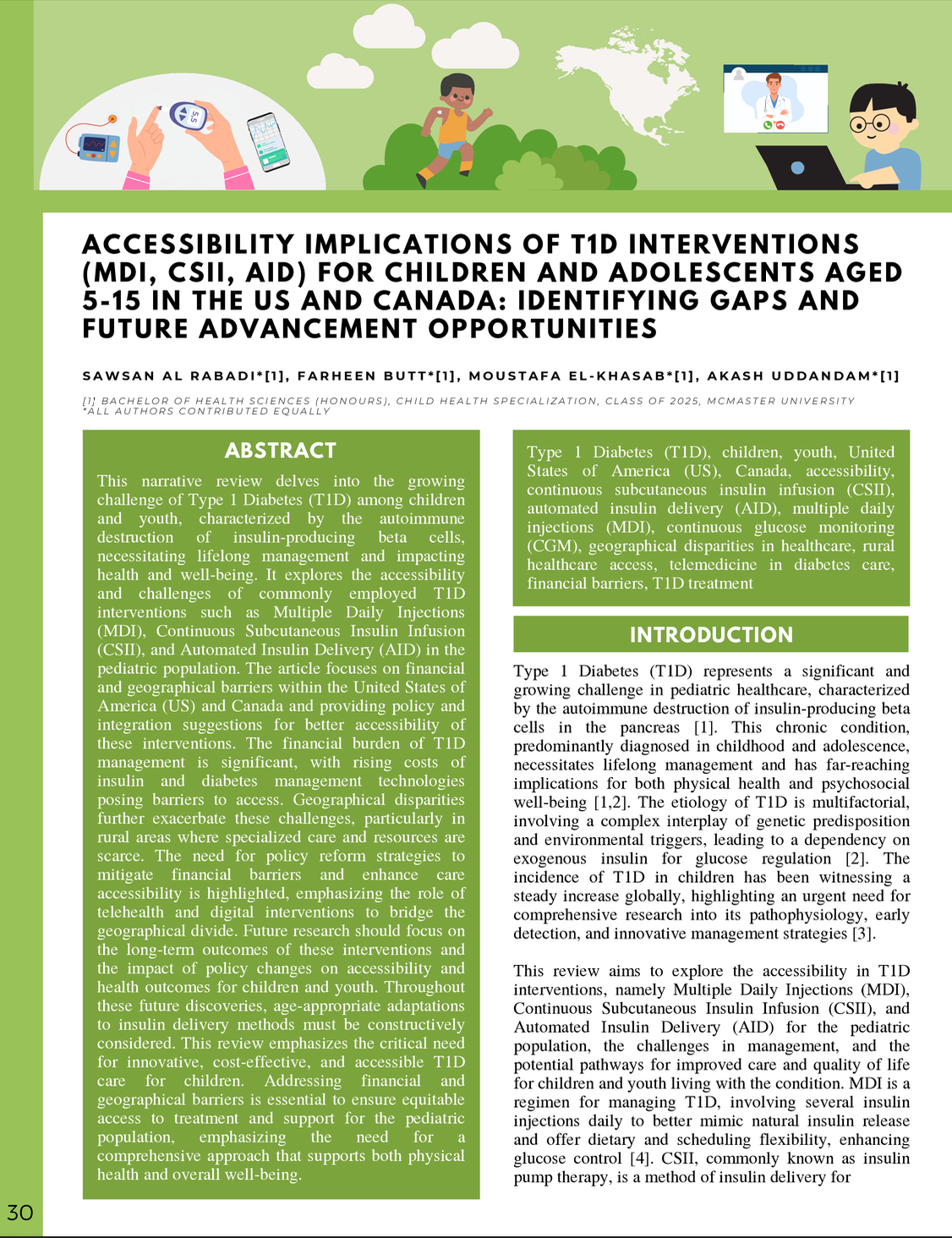Accessibility Implications of T1D Interventions (MDI, CSII, AID) for Children and Adolescents Aged 5-15 in the US and Canada: Identifying Gaps and Future Advancement Opportunities
DOI:
https://doi.org/10.15173/child.v3i1.3902Abstract
This narrative review delves into the growing challenge of Type 1 Diabetes (T1D) among children and youth, characterized by the autoimmune destruction of insulin-producing beta cells, necessitating lifelong management and impacting health and well-being. It explores the accessibility and challenges of commonly employed T1D interventions such as Multiple Daily Injections (MDI), Continuous Subcutaneous Insulin Infusion (CSII), and Automated Insulin Delivery (AID) in the pediatric population. The article focuses on financial and geographical barriers within the United States of America (US) and Canada and providing policy and integration suggestions for better accessibility of these interventions. The financial burden of T1D management is significant, with rising costs of insulin and diabetes management technologies posing barriers to access. Geographical disparities further exacerbate these challenges, particularly in rural areas where specialized care and resources are scarce. The need for policy reform strategies to mitigate financial barriers and enhance care accessibility is highlighted, emphasizing the role of telehealth and digital interventions to bridge the geographical divide. Future research should focus on the long-term outcomes of these interventions and the impact of policy changes on accessibility and health outcomes for children and youth. Throughout these future discoveries, age-appropriate adaptations to insulin delivery methods must be constructively considered. This review emphasizes the critical need for innovative, cost-effective, and accessible T1D care for children. Addressing financial and geographical barriers is essential to ensure equitable access to treatment and support for the pediatric population, emphasizing the need for a comprehensive approach that supports both physical health and overall well-being.

